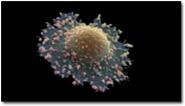3.6 Protein kinases
Protein kinases phosphorylate proteins either at tyrosine residues (tyrosine kinases), or at serine and threonine residues (serine–threonine kinases), or on any of these three amino acids (dual-specificity kinases). All these activities are employed in signal transduction pathways (histidine kinases also operate in certain plant and bacterial pathways, but not in animals). You should now be familiar with receptor tyrosine kinases, and have seen in some detail how phosphorylation of particular tyrosine residues can create docking sites for SH2-containing proteins (Section 2.3). You have also been introduced to the idea that phosphorylating key residues can induce a conformational change that can help to either activate or inactivate the protein, depending on both where the phosphorylation site is on the protein and on what other signals are being received by the protein, as illustrated for Src in Figure 29. You have also become familiar with several of the key serine–threonine kinases involved in signalling, such as the PKA, PKC and CaM kinases (Sections 3.3 and 3.4). There are two further very important groups of kinases that we shall now describe, namely those of the MAP kinase and the JAK–STAT pathways. Then we shall draw all these kinases together into families, and point out common domains and common themes in their mechanism of activation.
